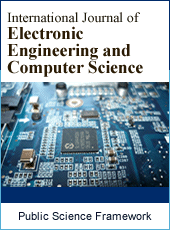International Journal of Electronic Engineering and Computer Science
Articles Information
International Journal of Electronic Engineering and Computer Science, Vol.3, No.2, Jun. 2018, Pub. Date: Jul. 26, 2018
Limitations of Turing Machine and Advanced Models of Computation
Pages: 22-28 Views: 2085 Downloads: 3674
[01]
Naseer Ahmad, Department of Computer Science, Virtual University of Pakistan, Lahore, Pakistan.
[02]
Muhammad Waqas Boota, Department of Computer Science, Virtual University of Pakistan, Lahore, Pakistan.
In this paper a discussion on limitations of Turing Machine and examine various models of computations is carried out. These new models are extending from Turing Machine called as SuperTuring model of computation. Also describe other Super Turing models of computation in a short. Dynamic interaction of internet, an infinite adaptation and robots are popular fields which cannot describe by Turing machine. We can do this with new models of computation as SuperTuring models of computation. Here, three popular SuperTuring modes of computation are Interaction machine, the π calculus and the $ calculus. In this paper it is explained that how these models solve the computational problems. In the future, SuperTuring models of computation will become the central programming paradigm.
Entscheidungsproblem, Algorithm, Computation, Interaction Machine, The π Calculus, The $ Calculus
[01]
General structure of the Windows Mobile kernel http://msdn.microsoft.com/en-us/library/aa909237.aspx
[02]
Overview of the Symbian architecture http://www.developer.nokia.com/Community/Wiki/Porting_iPhone_native_(Objective-C)_applications_to_S60_5th_Edition
[03]
Overview of the iPhone OS architecture http://www.developer.nokia.com/Community/Wiki/Porting_iPhone_native_(Objective-C)_applications_to_S60_5th_Edition
[04]
CFNetwork and other software layers on Mac OS X http://developer.apple.com/library/ios/#documentation/Networking/Conceptual/CFNetwork/Concepts/Concepts.html
[05]
Overview of the Android architecture http://elinux.org/Android_Architecture
[06]
The Blackberry MDS Runtime environment http://www.rim.com/symposium/press/pdf/BlackBerry_Mobile_Data_System_4.pdf
[07]
A Survey of Mobile Platforms for Pervasive Computing By Hielko van der Hoorn. pp 16-36 http://www.cs.rug.nl/~aiellom/tesi/vanderHoorn.pdf
[08]
Comprehensive Analysis of Smartphone OS Capabilities and Performance pp. 3-6 http://www.scf.usc.edu/~juihungc/project_page/doc/ee532_FinalReport.pdf
[09]
http://en.wikipedia.org/wiki/IPhone
[10]
Design a Mini-Operating System for Mobile Phone by Dhuha Albazaz pp. 1-2.
[11]
Comparative Study of Different Mobile Operating Systems by T. N. Sharma, Mahender Kr. Beniwal, Arpita Sharma pp. 1
[12]
Wegner P., Why Interaction is More Powerful Than Algorithms, Communica-tions of the ACM40: 5, May 1997, pp. 81-91.
[13]
ACM Curriculum Committee (1968) Curriculum 68: Recommendations for academic programs in computer science. A Report of the ACM Curriculum Committee Science. Comm. ACM, 11, 151-169.
[14]
Gödel, K. (1931) Uber formal unedtscheidare Satze der Principa Mathematica und Physik, 38, 173-198.
[15]
Eugene Eberbach, Dina Goldin, and Peter Wegner “Turing Ideas and Models of Computation”.
[16]
Peter Wegner and Eugene Eberbach “New Models of Computation”, 2003.
[17]
Peter Wegner and Dina Goldin “Computation beyond Turing”.

ISSN Print: Pending
ISSN Online: Pending
Current Issue:
Vol. 6, Issue 3, September Submit a Manuscript Join Editorial Board Join Reviewer Team
ISSN Online: Pending
Current Issue:
Vol. 6, Issue 3, September Submit a Manuscript Join Editorial Board Join Reviewer Team
| About This Journal |
| All Issues |
| Open Access |
| Indexing |
| Payment Information |
| Author Guidelines |
| Review Process |
| Publication Ethics |
| Editorial Board |
| Peer Reviewers |


